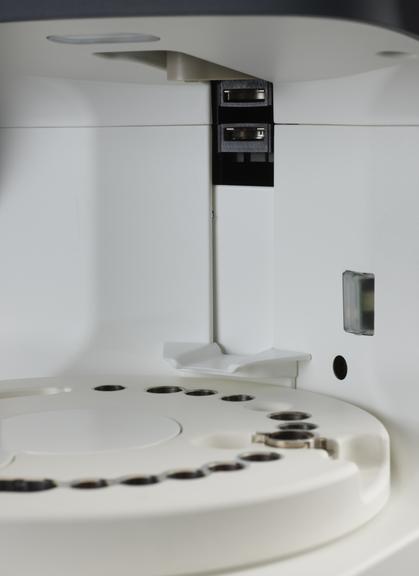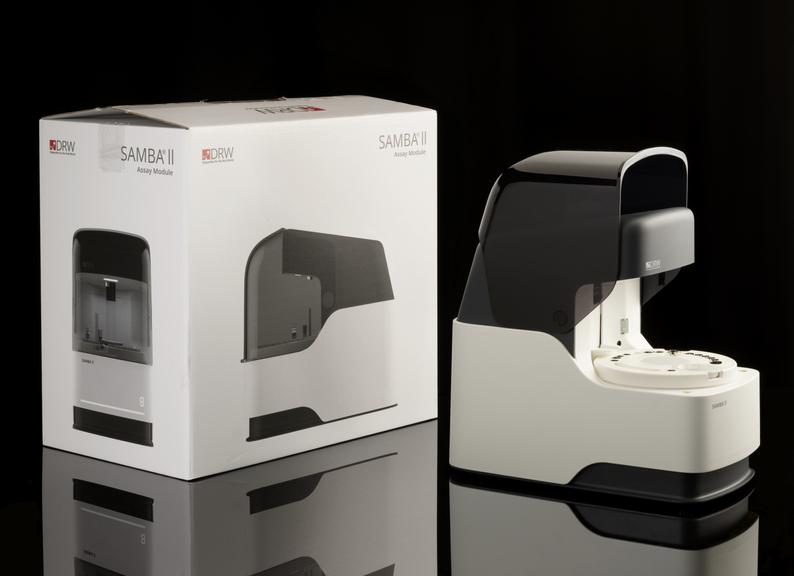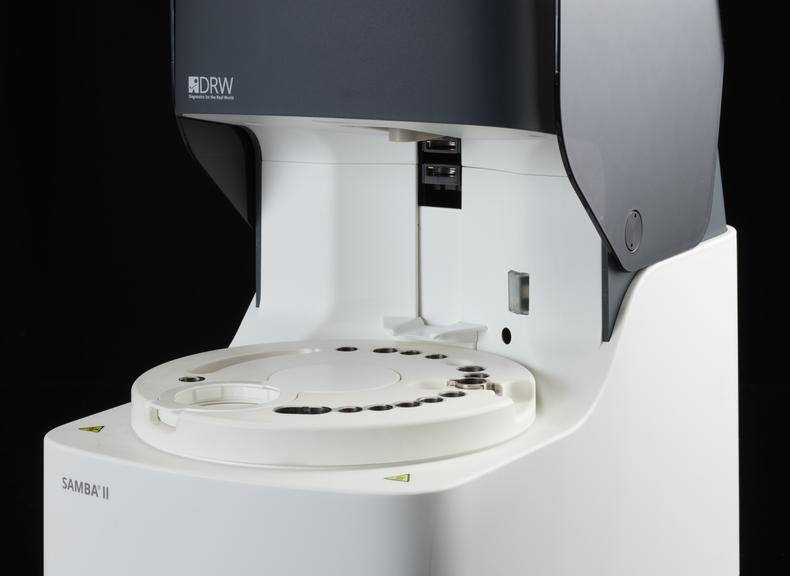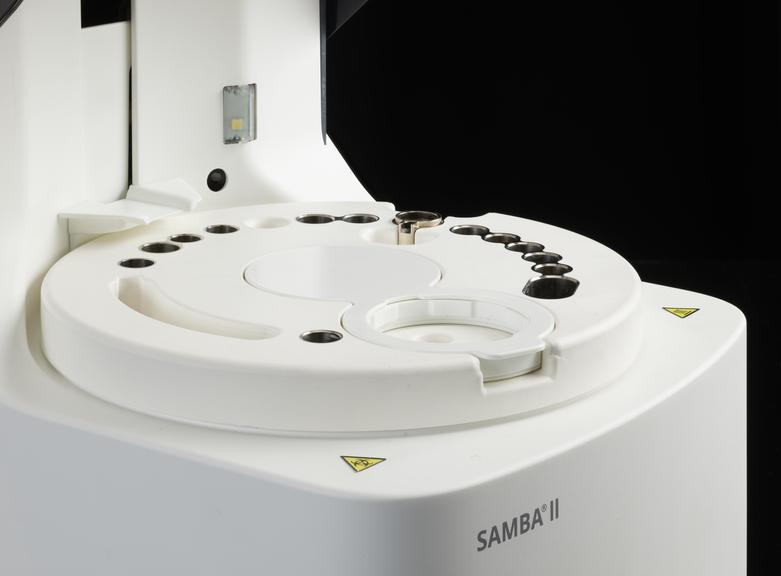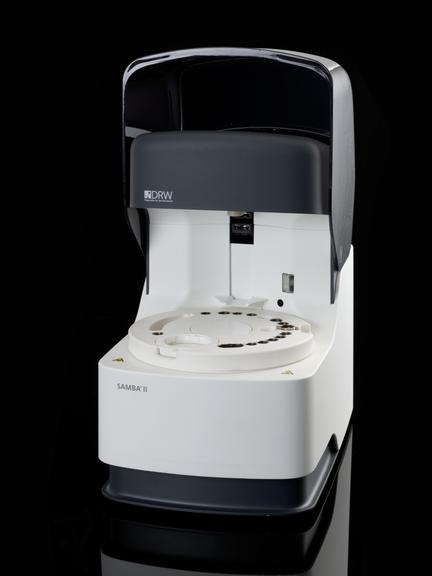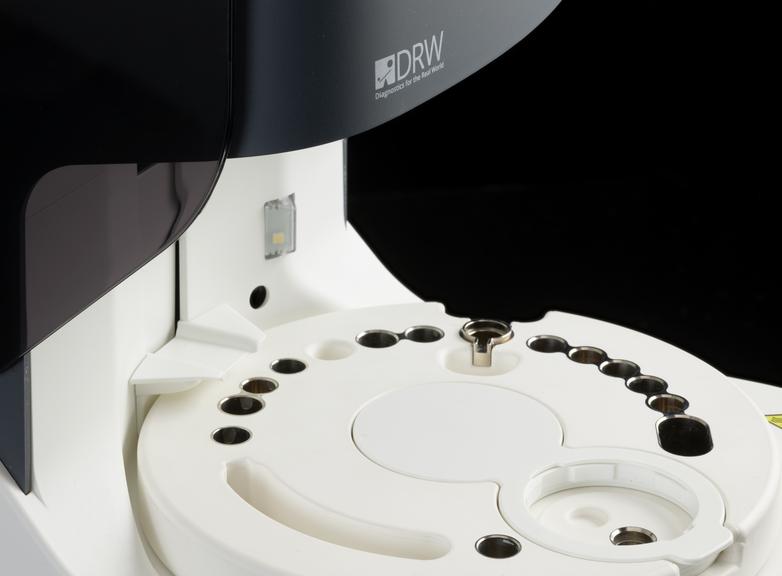SAMBA II diagnostic device
SAMBA® II (Simple AMplification Based Assay) diagnostic device, invented by Dr Helen Lee, developed and made by Diagnostics for the Real World, 2015-2020
More
Launched in 2014, the SAMBA® II is designed to be used at the point of care – bringing rapid results to people, particularly in the Global South. Originally designed for quick, easy, and reliable HIV testing, hepatitis C and COVID-19 tests are also available. Once samples are loaded into the SAMBA® II machine, the remainder of the process is fully automated. Uniquely shaped cartridges contain the reagents necessary for testing. Results are given in two ways – from a visual result using one or three lines – like some pregnancy tests and via a Bluetooth connected device. An integrated camera ensures consistent and accurate results.
The SAMBA® name comes from Simple AMplification-Based Assay. The device looks for traces of a virus’ or bacterium’s genetic material and amplifies them so they are detectable. Lee also says that the memorable name also was sparked as the engineers liked dancing, but also the device is quietly moving and shaking.
- Materials:
- plastic (unidentified) and electronic components
- Object Number:
- 2021-1627/1
- type:
- diagnostic tool








